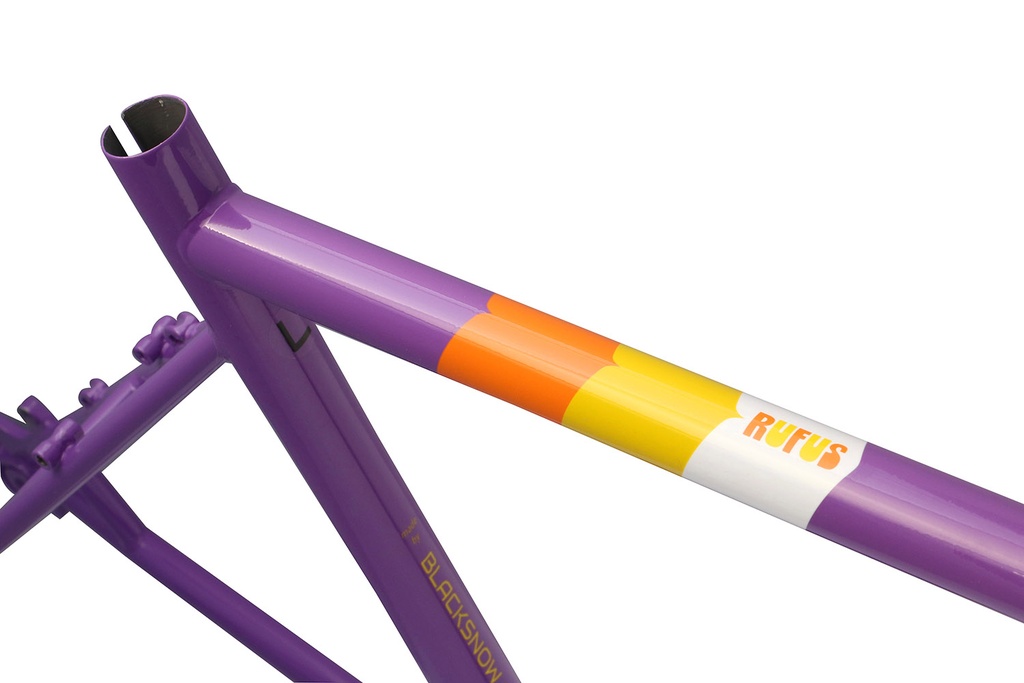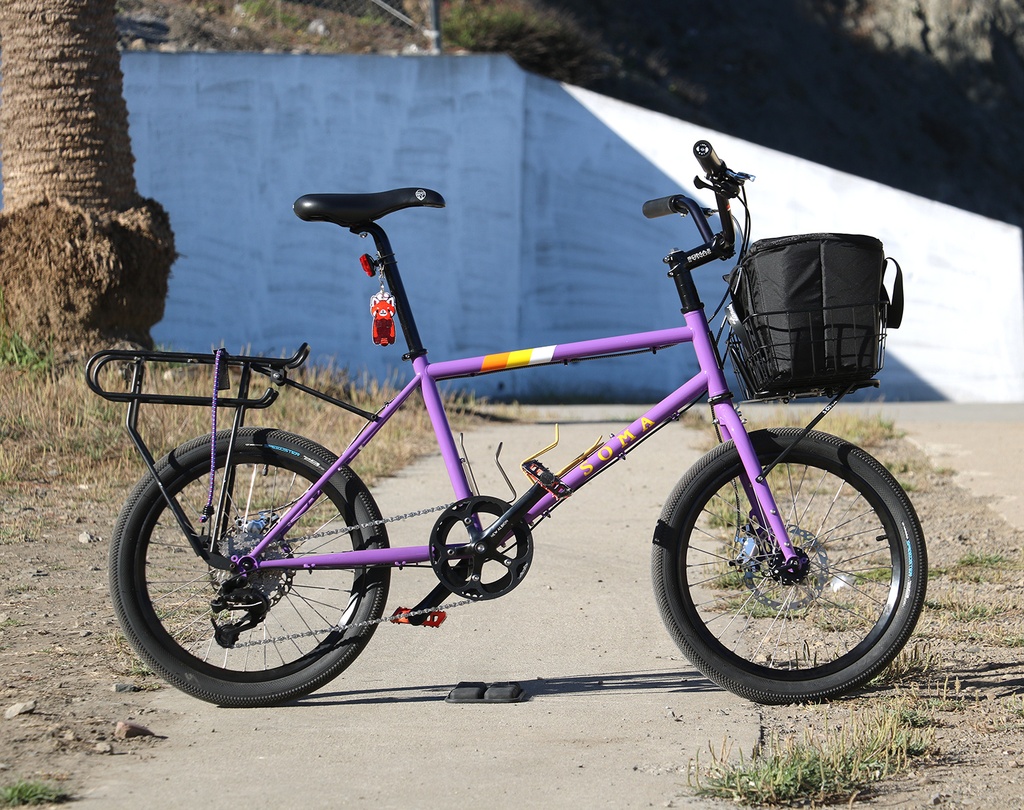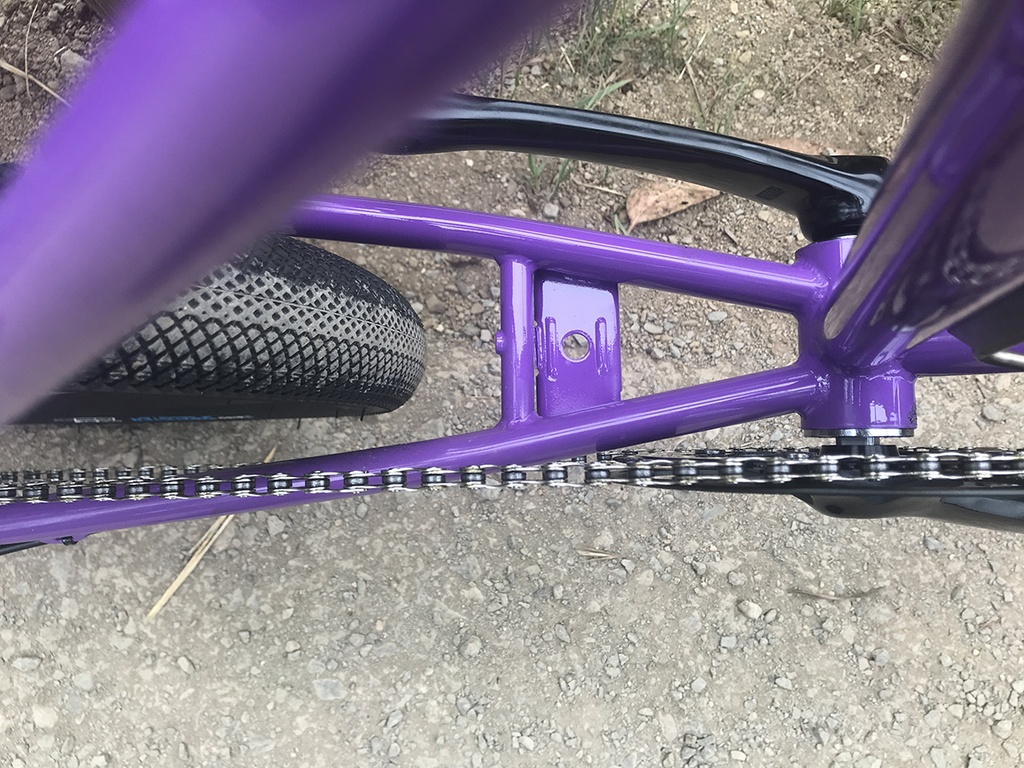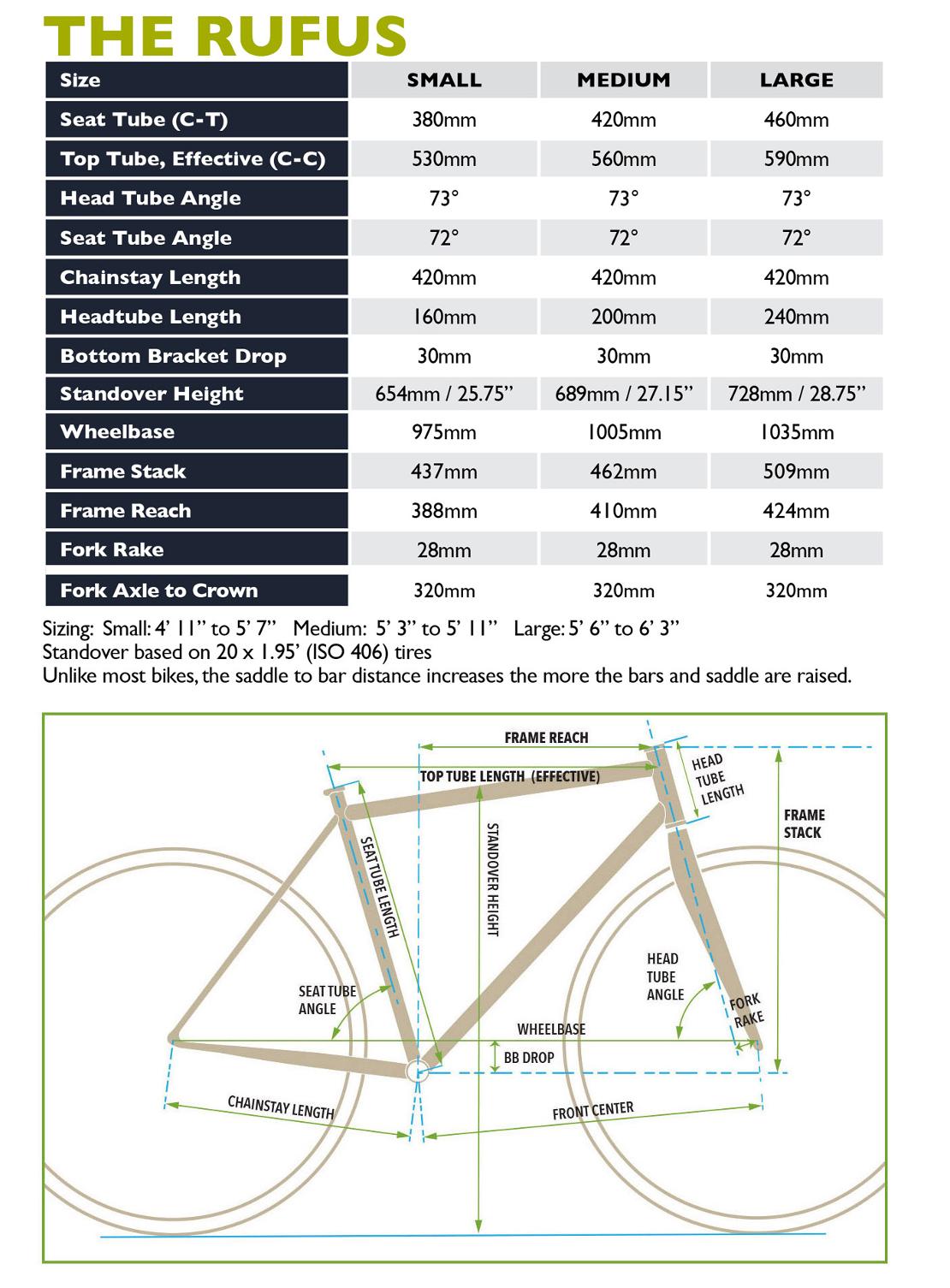Specifications and Recommendations:
- Bottom bracket shell: 68mm, English threading (BSA)
- Drivetrain: 1x (no routing for front derailleur) (if you do fashion your own routing, note you will need a mini-velo/folding bike front derailleur that fits a 28.6mm seat tube)
- Max. chainring fit based on chainline:
Chainline 44mm -> 53t max
Chainline 47.5mm -> 55t max
Chainline 50mm -> 57t max - Max. Tire Fit: 20 x 2.3"
- Seatpost: 27.2mm OD (A 400mm long post recommended if you want to share it with people of different heights)
(There is no internal dropper post routing) - Seat clamp: 29.8mm/30.0mm
- Stem Clamp: 1-1/8" (28.6mm)
- Fork steerer length: 400mm
- Fork axle to crown: 320mm
- Rotor size recommendation: 140/160mm
- Rear dropout has M6 upper bosses and M5 lower bosses
Tips for setting up your Rufus
Sizing: Because of the low slung frame shape, each of the three sizes fits a wide range of heights. Unlike conventional bikes, as you raise the bar and saddle higher, the bar to saddle distance grows, too. Someone 5'7" can generally fit the Small with either road drop or MTB bars, the Medium with MTB or alt bars and the Large with alt or townie bars. Reach, the horizontal distance from pedal to bars, does not grow longer as bars go higher. The reach actually shrinks a little (just like all other bikes)
Bar set up: You can use any style of bar for your Rufus. Just be aware of the fundamentals: A drop bar can extend your reach 80 to 100mm over a standard MTB bar. A backsweep bar can reduce your reach by 30 to over 120mm. These along with bar height determine how upright or sporty your ride position is. The Rufus has an extra long fork steerer which allows for setting bar height fairly high. Expect to use many headset spacers, especially if you are running a drop bar. Because the fork's steerer is CrMo steel you are not limited to the 40mm tall spacer stack like you are with carbon fiber steerers. Set up the bike up with your optimum seat height, to help you visualize what height your bars need to be. Stem length and angle also helps you fine tune fit. When using drop bars, we generally do not recommend stems longer than 90mm.
Small wheels and gearing: Small wheels are easier to get spinning and climb with, so you don't need a huge cassette as you might with a gravel or mountain bike. A 44t crank with a 11-32t cassette is usually plenty of range for all around riding including climbing on dirt paths. Those concerned with maxing your road speed or spinning out can go to a 50 or 53t.
Do not use Long Cage Rear Derailleurs: Long and some medium cage derailleurs come very close to the tire in certain cog positions. While not dragging on the ground a lower derailleur pulley can strike objects more easily, too. Chain and tire clearance can get tight with tires over 2.0" when using road-specific cranks. Shimano Zee 10-speed short cage and Microshift Advent Super Short 9-speed are good options that are readily available.
How do I carry cargo on a Rufus?
The Rufus is equipped with a slew of rack mounts on the front and rear, but there are particular consideration before spending money on racks and bags.
- Mini Front Rack: One of our favorite set ups is getting a mini front rack and zip-tying a Wald Basket. The basket mounts fairly low which helps the bike handle steadily when you have weight in the basket. You can carry more weight than a regular road before the weight starts fighting your steering. The most popular are the 15" Wald 137 basket, but because of how low it mounts, you can also equip a deeper basket without it interfering the cables and bars, which could securely hold a full grocery bag or daypack.
- Frame bags: There is a lot of space for a top tube/stem mount bag or a bag that mounts inside the frame triangle. The LG size frame can fit a half frame bag plus 2 small water bottles inside the frame triangle.
- Front and rear panniers (bags that hang off a rack on either side of the wheel): There are mounts for a front or rear pannier rack, but note the rack will hang 3.5 to 4" lower than on a bike with 650b/700c wheels. You don't want to use bags, so large that they can touch the ground when leaning into a corners. Micro panniers and grocery panniers are usually fine. An ideal rack set-up can allow fitting panniers up to 12.5 liters.
Please note: A stuffed bag on the side of your front fork will reduce how tightly the bike can turn.
Rear dropout has M6 upper bosses and M5 lower bosses. Tubus racks usually can fit M6 bolts, but may come with M5 sometimes. We highly recommend our Rakku 2 rack. It fits the lower M5 boss perfectly and also kicks the load back a couple of inches to reduce heel clip with bags.
- Rear trunk bag: These mount to the top of a rear rack. On a regular bike, a bag like this makes it hard for some people to swing their leg over the rear wheel to mount up. But on this bike the bag will be 3.5 to 4" lower. Plus the bike's low standover height will allow some riders to throw their leg over the front of the saddle.
- Bar bags and seat bags: The Rufus is generally compatible with most small handlebar or seatbags that other bikes can fit. Depends on the bars you have.
Can this bike fit in your trunk or backseat?
In a 2019 Honda Fit, a size Small bike built with high rise or MTB bars can fit horizontally in the behind the front seat with the Magic Seats folded up. Just take off the front wheel and roll it in using the back wheel. On the LG it is better to stow it in from the back with the rear seats folded down.
Length measured on bike with 1.95" tires: SM: 146cm LG: 152cm
Is the Rufus a BMX bike? Can I ride dirt trail with it?
You can ride some dirt trails with it, but the Rufus should not be ridden like a BMX freestyle, dirt jump or XC mountain bike. Its thin double butted steel tubes are not for that type of abuse. The frame is built to handle what a 700c gravel or CX bike can handle. BMX tires are usually excellent for riding on smooth hardpacked dirt, but once things gets rocky or washboardy, it is harder to maintain speed like a larger wheel bike. Otherwise this bike is as fun as it looks on dirt. You just need to be wary of depressions in the dirt (also potholes in the streets) which small wheels can fall into instead of rolling over.




















